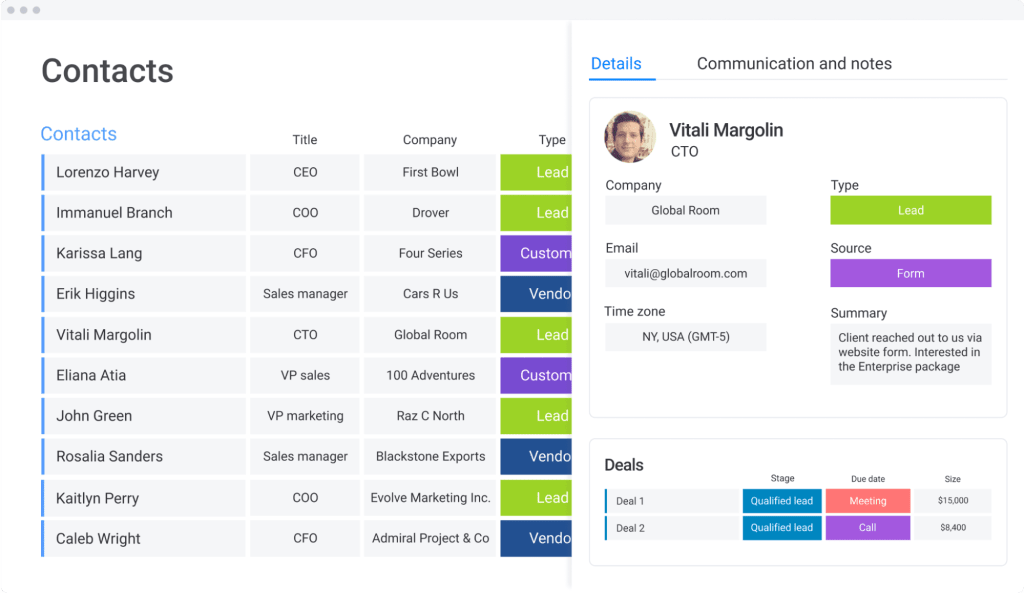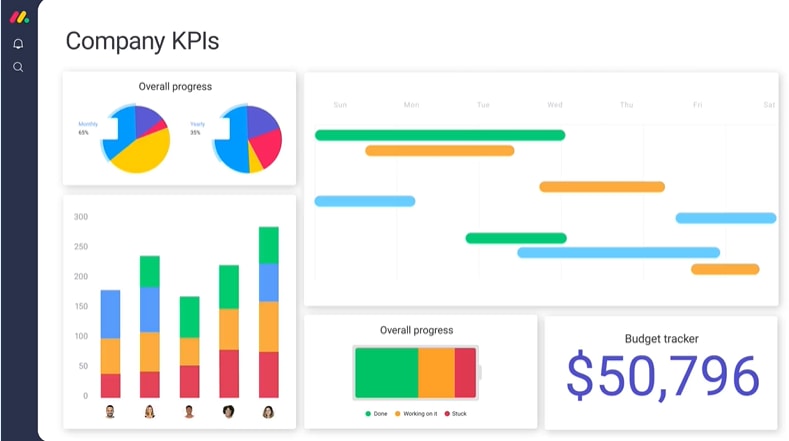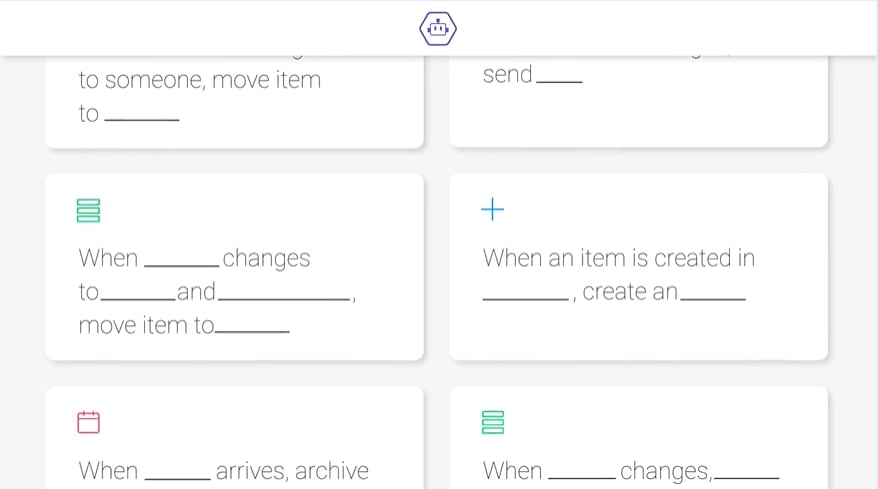Software sales used to be a long, manual process full of pitch meetings and negotiations. But, this isn’t the case anymore. As companies race toward digital transformation, software companies have had to review their sales strategy and transform even faster. Software-as-a-service (SaaS) has exploded, making the software sales cycle faster and more flexible than ever before.
So how can you keep up with the rapidly changing field of software sales? This guide is here to help. We’ll talfk you through the unique challenges of software sales and what the new software sales cycle looks like. And along the way, we’ll give you the lowdown on how monday.com can make it all easier.
What is SaaS sales?
Before we can get into the nitty-gritty of what SaaS sales entail, we need to define SaaS. SaaS stands for software as a service, which is essentially a fancy term for web-based software. It’s not a physical or retail product, but rather digital software that can be accessed on the web.
So, SaaS sales is just the selling of Saas products to people. But because SaaS is a very different concept than sales for a physical product, the approach to this type of selling is different and has distinguished itself into its own unique category of sales. SaaS products are generally not cheap, so this category often emphasizes extra attention to potential customers and the importance of the sales close.
What are the unique challenges of software sales?
Here’s the thing about software sales: the field is in the middle of a huge transition. The SaaS model has become the norm as businesses look for more affordable solutions with a faster setup time than traditional licensed software.
In fact, the SaaS market has doubled since 2014, growing to $157 billion in 2020. But that doesn’t mean traditional software sales are completely obsolete. Some organizations still prefer the one-time installation costs — and on-site installation and management — of traditional software solutions.
No matter which part of the software sales market you’re in, you still need to understand the unique challenges facing software sales teams today. You’ll be better prepared to meet the needs of your prospects no matter how much the software market changes.
And — of course — you’ll want to be very familiar with the challenges that make software sales an entirely different ballgame from hardware or retail sales. Here are some of the most important:
- Software sales is a saturated market. With literally 1,000s of software options available to consumers, you and your sales team need to be experts at conveying your unique value proposition.
Remember that the average company uses 130 different SaaS apps today — nearly eight times the number of apps used just three years ago. Software sales representatives need to prove that their product adds real value to an enterprise, every time.
- Independent buyers want to do their own research. Traditional software sales depended on cold calling, sales pitches, and negotiation meetings to show prospects what the software could do. But today, buyers want to research on their own before speaking to a sales rep. This means each sales executive needs to provide a personalized, consultant-like, sales experience instead of recycling the same sales pitch over and over.
This is where a CRM with strong contact management features makes a huge difference. With something like this template from monday.com, any member of your sales team can track what kind of contact they had with a lead. This way, everyone can be on the same page, no matter how personalized your sales process gets.

- Organizations have multiple decision-makers. As organizations get more complex, more and more people need to sign off on any software purchases. Software sales representatives need to build rapport with a group, rather than a single client.
- Sales must collaborate with marketing and support teams. Software sales is a complex process, and buyer tendencies are shifting fast. By working with marketing and customer support teams, sales reps can better understand their prospects and increase their close rate.
What are the stages of the SaaS cycle?
The traditional software sales cycle is long, taking weeks or months to complete from outreach to closing the deal.
With the rise of SaaS, software sales teams need a faster and more flexible sales pipeline that can keep up with consumer demands.Thankfully, the key stages of the software sales cycle — listed below — are largely the same, no matter whether you’re selling a traditional software product or SaaS. You’ll just need to adapt your sales process to meet the unique needs of your prospects.
- Awareness: first, your audience needs to know you exist. This can happen through content marketing or other campaigns. For traditional software or enterprise sales, this stage might entail prospecting, research, and outreach.
- Engagement: this is the relationship-building stage, where customers interact with your brand or content. They might sign up for a newsletter or download a white paper. This is also the stage where cold or warm emailing can be effective — a tactic that 50% of B2B marketers say is effective for generating leads.
- Exploration: your sales team might not communicate directly with prospects until the exploration stage. At this point, you’ll want to offer educational or informational content, a sales call or meeting, or even a free trial to prove your product’s value.
- Conversion: finally, your prospect commits to a purchase. Depending on your business model, this stage might include negotiations or customizations before the deal is finalized.
- Support and Retention: this stage is crucial for SaaS sales. Since the subscription model means customers have to renew their product regularly, sales and support teams should reach out frequently to make sure the business is satisfied and remains a customer long-term.
Because the new software sales cycle needs to adapt constantly, a CRM or sales software that tracks your leads through your sales pipeline is really important to your success.
For example, a CRM template like this one from monday.com shows the last action taken for every active lead, and then shows the next action that should be taken.

With a set up like this, your entire sales team can know exactly where each lead stands at any given time. The right people can follow up with prospects, and automations can help the sales process go even faster.
What are the most important metrics for SaaS sales?
Tracking sales KPIs helps you optimize your sales process to be more productive and profitable for the business.
When you choose the right KPIs for your specific sales models and business goals, you’ll be able to communicate the goals and progress of your sales team better than ever before.And good communication pays off. It helps teams work better, get more done, and even reduces the stress of bad company communication — something 80% of employees feel.
KPIs aren’t one-size-fits-all. As you look through this list of sales metrics, pick the ones that best reflect your sales goals.
- Qualified leads: the number of new leads that are very likely to convert. In some sales pipelines, it makes sense to track marketing qualified leads (MQLs) and sales qualified leads (SQLs) separately, based on the criteria from each of those teams. You can also use a lead scoring system to outline the criteria for a qualified lead.
- Lead-to-customer conversion rate: the percentage of qualified leads that make a purchase. It’s often a better metric than the general conversion rate, which measures how many visitors or prospects make a purchase.
- Customer lifetime value (CLV): the amount of revenue a single customer or sale is expected to bring the business over the course of their subscription. This is particularly helpful for SaaS sales teams.
- Customer acquisition cost (CAC): how much is spent to convert a single customer. CAC helps you see how resource-efficient your sales team is.
- Average conversion time: the amount of time it takes for a lead to convert, starting from their first touchpoint. The shorter your conversion time, the more productive your sales team is.
- Sales quota attainment: a productivity KPI that looks at how closely a sales rep or team comes to meeting their sales goal.
Once you’ve chosen your KPIs, it’s important to review them regularly. This helps you know exactly how your team is performing and where everything is in your sales pipeline at any time. Creating a dashboard like this one in monday.com gives you access to real-time KPIs — something that 54% of managers don’t have. You’ll have a better grasp on your sales performance, communicate better with other teams, and get ahead of the competition.

monday.com helps you reach your software sales goals
monday.com is an all-in-one Work OS where you can build any tool your team might need to work better. That means you can use it as a CRM for sales, marketing, and customer support — all at the same time.
You can manage not just software sales, but software development and updates too.
And if you’re transitioning from traditional software licensing to a SaaS model, monday.com can adapt right along with you. Plus, you can use tons of templates for reference or inspiration, integrate with your existing CRM or other tools, and even set up workflow automations like these ones to make your work go faster.

SaaS sales processes need to remain flexible
Software sales are getting more complex, and sales teams need to adapt and personalize their process for each new lead. But monday.com lets you build the sales software or CRM you need to create a custom sales pipeline that helps your team get more done. With monday.com, you’ll be able to work better, collaborate more, and close more deals. Try it for yourself today.

